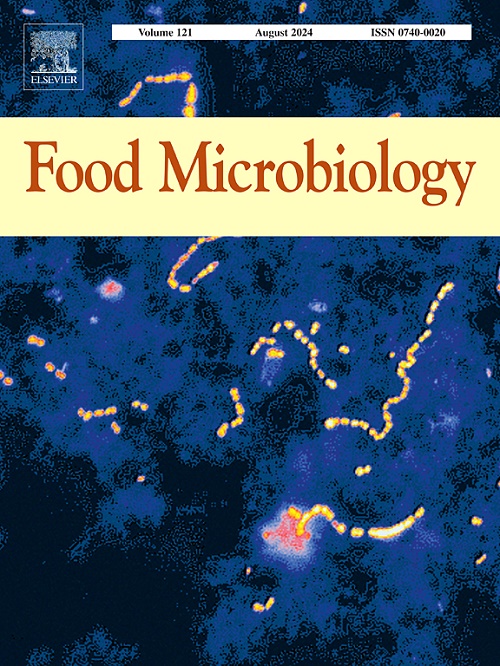冷冻鱼中沙门氏菌实时PCR检测方法的多实验室验证研究
IF 4.5
1区 农林科学
Q1 BIOTECHNOLOGY & APPLIED MICROBIOLOGY
引用次数: 0
摘要
采用多实验室验证(MLV)方法对FDA开发的用于检测冷冻鱼中沙门氏菌的定量PCR (qPCR)方法进行了验证。冷冻鱼代表了在BAM沙门氏菌法中使用混合样品制备程序的食品。这项研究是在一个成功的MLV研究后进行的,该研究代表了使用浸泡样品制备程序的食物。14个实验室参与了这项研究,他们分别使用qPCR和BAM培养(参考)方法分析了24个盲编码的冷冻鱼测试部分。在所有合作者中,qPCR和培养方法的阳性率分别为39%和40%,均在FDA微生物方法验证指南要求的分数范围(25% - 75%)内。衡量qPCR与培养方法结果不一致的负偏差(ND)和正偏差(PD)数的差(ND-PD)和和(ND + PD)均未超过ISO 16140-2:2016要求的可接受限度。相对检测水平(RLOD),即比较两种方法之间的检测水平,约为1。总之,这些结果表明,qPCR和BAM培养方法同样适用于沙门氏菌的检测。此外,研究表明,qPCR方法在实验室间的结果可重复性好,对食品中沙门氏菌的检测具有足够的灵敏度和特异性。自动DNA提取提高了qPCR的灵敏度和更高质量的DNA提取,并为FDA实验室提供了高通量的应用。本文章由计算机程序翻译,如有差异,请以英文原文为准。
Multi-laboratory validation study of a real-time PCR method for detection of Salmonella in frozen fish
A multi-laboratory validation (MLV) study was performed to validate a quantitative PCR (qPCR) method developed by the FDA for detecting Salmonella in frozen fish. Frozen fish represents foods that use blending sample preparation procedure in the BAM Salmonella method. This study was carried out after a successful MLV study with baby spinach which represents foods that use soaking sample preparation procedure. Fourteen laboratories participated in this study and they each analyzed twenty-four blind-coded frozen fish test portions using both the qPCR and BAM culture (reference) methods. Across collaborators, this study yielded a ∼39 % and a ∼40 % positive rate for the qPCR and culture methods, respectively, which were within the fractional range (25 %–75 %) that is required by the FDA's Microbiological Method Validation Guidelines. The difference (ND-PD) and sum (ND + PD) of the numbers of negative deviation (ND) and positive deviation (PD), which measure disagreement of results between the qPCR and culture methods, both did not exceed the Acceptability Limit required by ISO 16140–2:2016. The relative level of detection (RLOD), which compares the levels of detection between the two methods, was approximately 1. Together, these results demonstrate that the qPCR and BAM culture methods performed equally well for the detection of Salmonella. Furthermore, the study showed that the qPCR method yielded reproducible results among laboratories and was both sufficiently sensitive and specific for the detection of Salmonella in foods. Automatic DNA extraction improves qPCR sensitivity with a higher quality of DNA extract and provides a high throughput application for FDA laboratories.
求助全文
通过发布文献求助,成功后即可免费获取论文全文。
去求助
来源期刊

Food microbiology
工程技术-生物工程与应用微生物
CiteScore
11.30
自引率
3.80%
发文量
179
审稿时长
44 days
期刊介绍:
Food Microbiology publishes original research articles, short communications, review papers, letters, news items and book reviews dealing with all aspects of the microbiology of foods. The editors aim to publish manuscripts of the highest quality which are both relevant and applicable to the broad field covered by the journal. Studies must be novel, have a clear connection to food microbiology, and be of general interest to the international community of food microbiologists. The editors make every effort to ensure rapid and fair reviews, resulting in timely publication of accepted manuscripts.
 求助内容:
求助内容: 应助结果提醒方式:
应助结果提醒方式:


